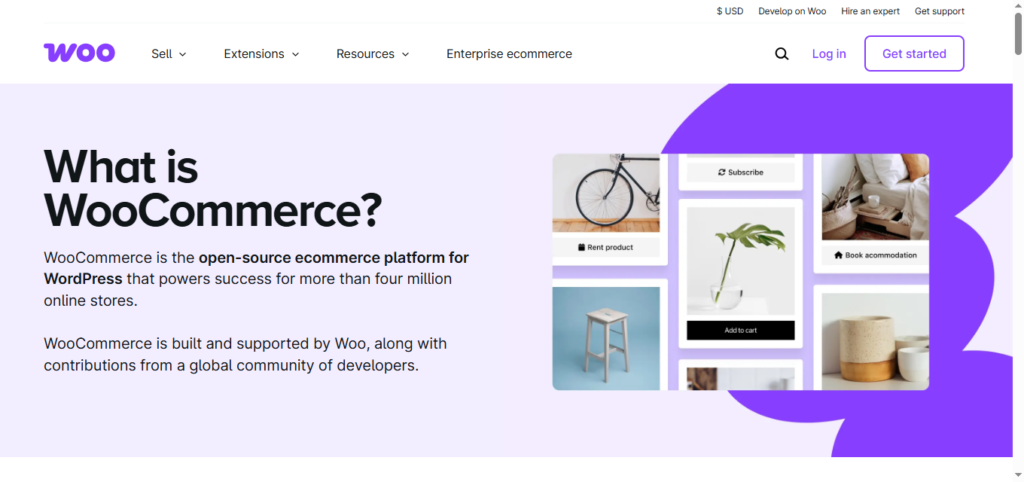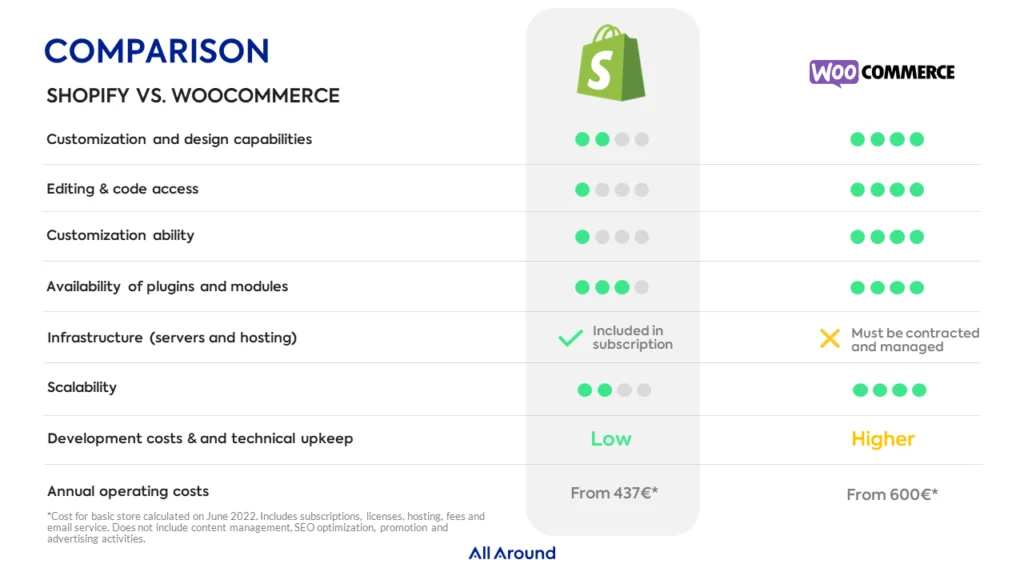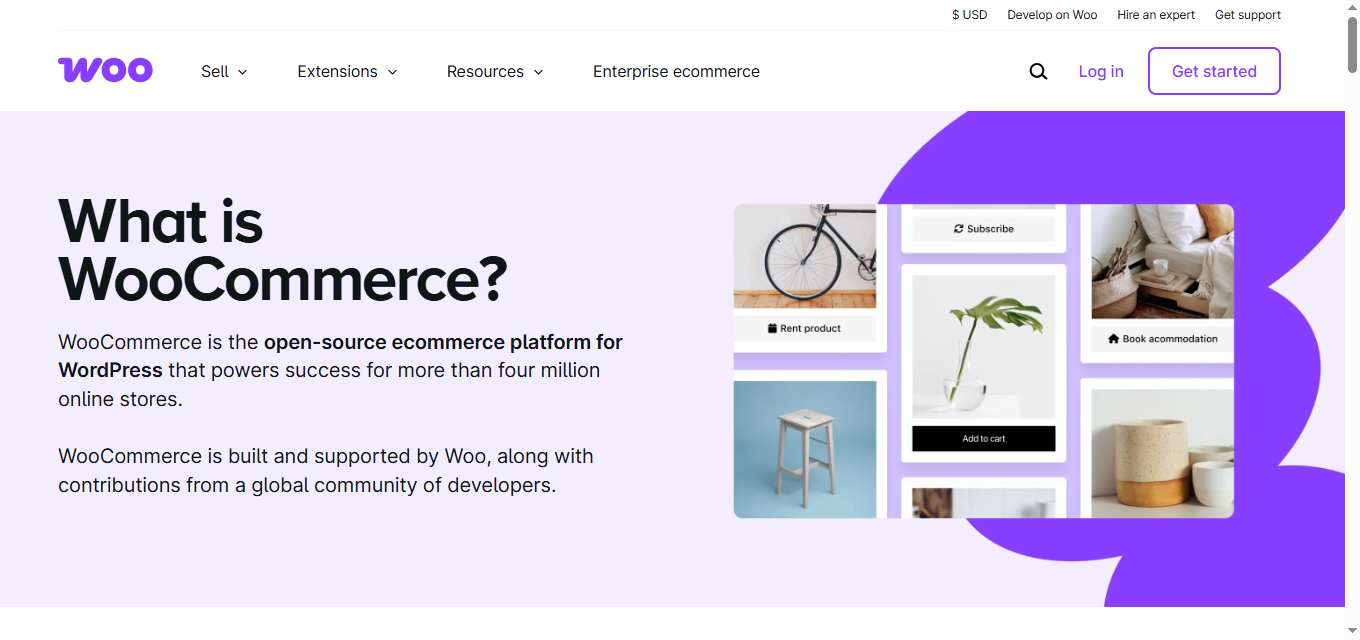Introduction of Woocommerce vs. Shopify
When setting up an online store, two of the most popular platforms you’ll encounter are WooCommerce and Shopify. Both offer a wide range of features, allowing entrepreneurs and businesses to create and manage their eCommerce stores efficiently. However, deciding between WooCommerce and Shopify can be a challenge. Which one will best serve your specific needs and goals? Let’s take an in-depth look at both platforms to help you make an informed decision.
What is WooCommerce?
WooCommerce is an open-source eCommerce plugin built specifically for WordPress. It is designed to add eCommerce functionality to WordPress websites, allowing users to easily sell physical and digital products, manage inventory, accept payments, and more. As an open-source platform, WooCommerce is highly customizable, making it an appealing choice for those who have a bit of technical knowledge or want complete control over the design and features of their store.

Key Features of WooCommerce
- Flexibility: Being open-source, WooCommerce gives you complete control over your website and product store. You can modify themes, install any plugins, and customize your store’s functionality according to your business needs.
- Cost-Effective: WooCommerce is free to download and use. However, additional costs may arise for premium themes, extensions, and hosting services.
- Integration with WordPress: WooCommerce is built on WordPress, which means you can take advantage of the massive range of WordPress plugins and tools.
- Payment Gateway Support: WooCommerce supports a wide range of payment gateways, including PayPal, Stripe, and credit card processors, which helps business owners reach customers across the globe.
What is Shopify?
Shopify is a cloud-based eCommerce platform that enables businesses to create and manage their online stores without needing to worry about hosting, security, or technical maintenance. It is a fully managed solution, meaning that Shopify takes care of everything from hosting to software updates, making it an ideal option for people who want a hassle-free experience.

Key Features of Shopify
- Ease of Use: Shopify’s user interface is straightforward and user-friendly, which allows even beginners to set up and manage their online store without any technical experience.
- All-in-One Solution: Shopify provides everything you need out-of-the-box—hosting, design templates, payment processing, marketing tools, and security.
- 24/7 Customer Support: Shopify offers round-the-clock customer support, ensuring that users always have help available when they need it.
- Mobile Optimization: Shopify stores are mobile-responsive, which is critical for ensuring that your customers can shop seamlessly from any device.
WooCommerce vs. Shopify: Key Differences
1. Pricing and Costs
One of the first factors to consider when comparing WooCommerce and Shopify is pricing.
- WooCommerce: WooCommerce itself is free to install, but users must pay for web hosting, which can range from $5 to $30 per month depending on your provider. Other costs include purchasing a premium theme (ranging from $30 to $100), paid extensions for added functionality, and security and backup plugins.
- Shopify: Shopify’s pricing starts at $29 per month for the Basic Plan, which includes hosting, SSL certification, and all eCommerce features. The more advanced plans (e.g., Shopify and Advanced Shopify) cost $79 and $299 per month, respectively, offering additional features like advanced reporting and more payment options.
Overall, WooCommerce can be more affordable initially, but it can become costly with ongoing expenses, especially as your business grows. Shopify, on the other hand, offers an all-inclusive package but at a higher starting price.

2. Ease of Use
For entrepreneurs with limited technical skills, ease of use is a significant factor.
- WooCommerce: While WooCommerce is user-friendly, it does require familiarity with WordPress. Setting up WooCommerce and managing products, taxes, and shipping can be overwhelming for beginners without web development knowledge. However, it offers extensive customization and control over the store, especially for those willing to invest time in learning.
- Shopify: Shopify excels in ease of use. Its drag-and-drop interface allows users to easily create and design their online store, even without any prior experience. Shopify’s step-by-step setup wizard and pre-built templates make it quick and easy to launch a store.
3. Customization and Flexibility
Customization is an essential aspect of creating a unique brand presence.
- WooCommerce: WooCommerce is built on WordPress, which is renowned for its customizability. Users can choose from thousands of themes and plugins to extend the functionality of their store. WooCommerce allows complete control over your store’s design and features, but this also means that more effort is required to achieve the desired look and functionality.
- Shopify: Shopify offers a variety of themes and apps, but it’s more restrictive in terms of customization compared to WooCommerce. While Shopify’s themes are well-designed, users are somewhat limited in how much they can modify unless they have coding knowledge. However, the Shopify App Store provides numerous integrations to add extra features to your store.
4. Payment Gateways and Fees
Another crucial consideration is how you handle payments.
- WooCommerce: WooCommerce supports a wide range of payment gateways (PayPal, Stripe, and more) with low transaction fees. However, the cost of some premium gateways or third-party payment processors can add up.
- Shopify: Shopify has its own integrated payment system, Shopify Payments, which eliminates transaction fees for Shopify merchants. However, if you choose to use external payment gateways, Shopify charges a 2% transaction fee on every sale (this is reduced with higher-tier plans). Shopify supports over 100 payment gateways globally.
5. Scalability
Both platforms can support large stores, but there are differences in scalability.
- WooCommerce: WooCommerce’s scalability depends on the hosting provider you choose. As your business grows, you may need to upgrade to a more powerful hosting plan or migrate to a dedicated server, which could incur additional costs.
- Shopify: Shopify scales smoothly and offers enterprise-level solutions through its Shopify Plus plan. It handles high-traffic stores and large inventories without any issues, and users don’t need to worry about hosting, as Shopify manages everything.
6. Customer Support
Support is an essential part of running an online business.
- WooCommerce: WooCommerce has a large online community, which is helpful for troubleshooting issues. There’s also support from WordPress developers and various forums. However, official support can be limited to the free version.
- Shopify: Shopify provides 24/7 customer support via chat, phone, and email. This is a major advantage for merchants who need immediate assistance. Shopify’s dedicated support team is highly responsive and ready to resolve any issues quickly.
Which is Better for You? WooCommerce or Shopify?
- Choose WooCommerce if you want complete control over your website, enjoy using WordPress, and have the technical ability to manage hosting and customizations. It’s ideal for businesses that require a highly tailored solution with low initial costs.
- Choose Shopify if you prefer a hassle-free solution that’s easy to use, secure, and fully managed. It’s the best choice for beginners or businesses that need a quick setup, mobile optimization, and 24/7 support.
Conclusion
Both WooCommerce and Shopify have their strengths and weaknesses. Ultimately, your decision should be based on your budget, technical expertise, and long-term business goals. WooCommerce offers unmatched flexibility and control, while Shopify provides simplicity and ease of use with an all-inclusive package. Choose the platform that aligns best with your business needs and objectives.

